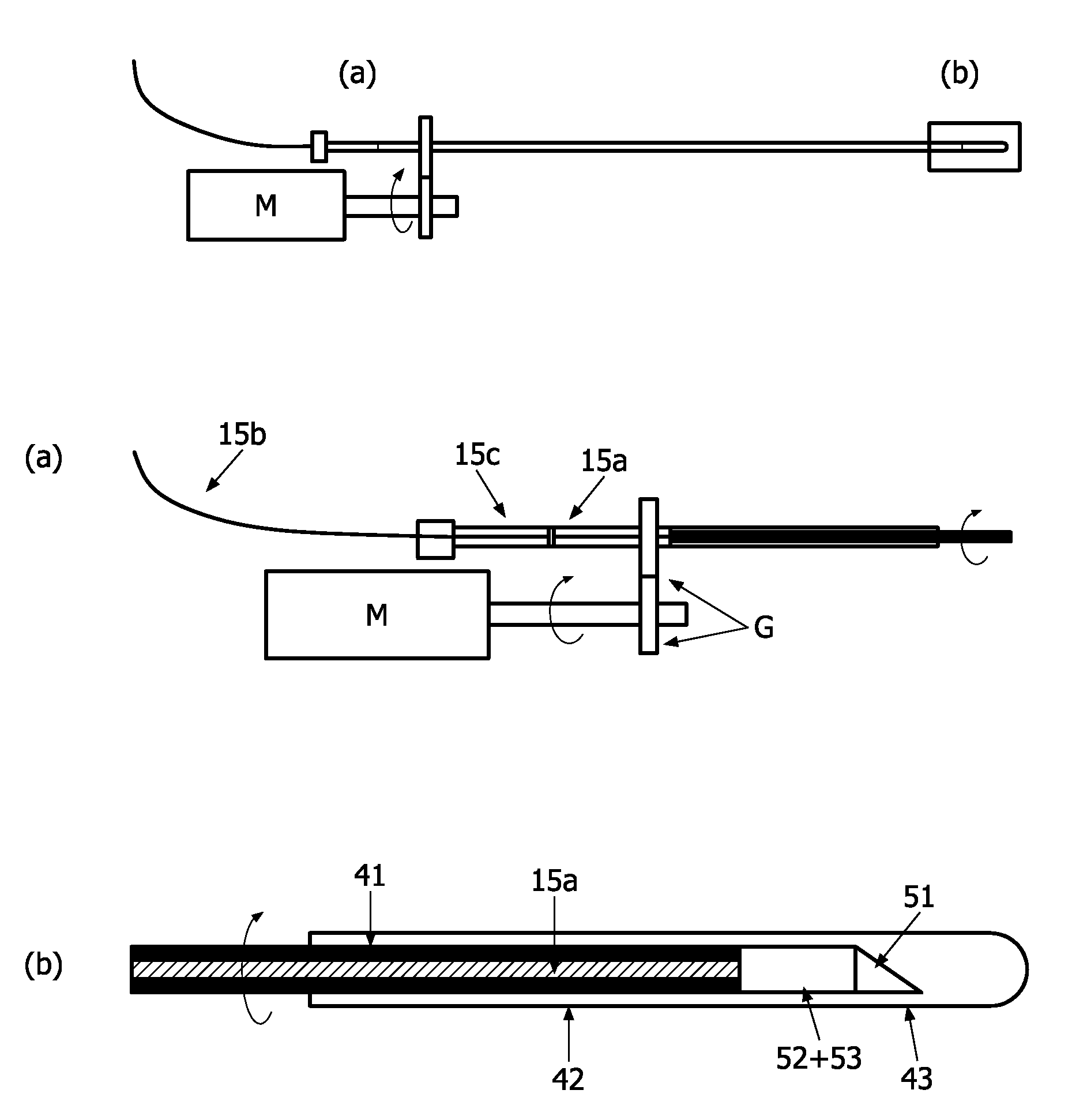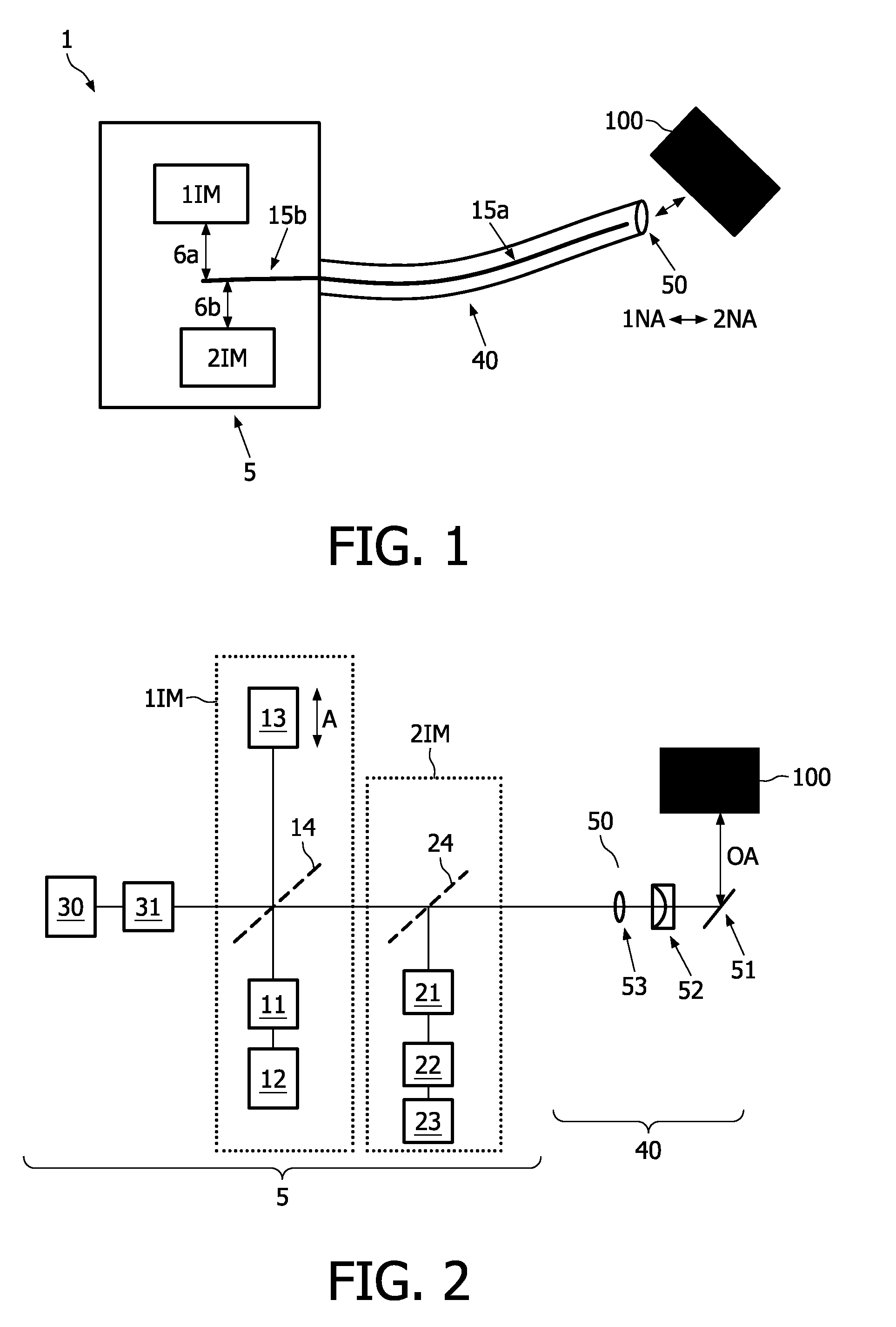An imaging system with two imaging modalities
a technology of imaging system and imaging modalities, applied in the field of imaging system, can solve the problems of inability to characterize in-vivo plaque on a cellular/molecular level, inability to properly perform detailed plaque inspection with current techniques, and inability to achieve accurate and accurate detection results. , the effect of miniaturisation and efficient control of the optical lens system
- Summary
- Abstract
- Description
- Claims
- Application Information
AI Technical Summary
Benefits of technology
Problems solved by technology
Method used
Image
Examples
Embodiment Construction
[0045]FIG. 1 is a schematic drawing of the imaging system 1 according to the present invention. The imaging system 1 comprises two main parts, i.e. a catheter 40 and an imaging unit 5. The catheter 40 and the imaging unit 5 can be disconnected. Typically, the catheter 40 is disposable after one-time use, but the catheter 40 can also be reusable if the catheter 40 is suited for sufficiently hygienic cleaning.
[0046]The catheter has an optical lens system 50, which is situated at an end portion of the catheter 40. The lens system 50 is optically connected to optical guide means 15a for guiding light through the catheter 40. The optical lens system 50 has a numerical aperture NA, which is changeable between a first numerical aperture 1NA and a second numerical aperture 2NA as indicated in the Figure. The second numerical aperture 2NA is higher than the first numerical aperture 1NA: 2NA>1NA.
[0047]The imaging unit 5 is arranged for optical imaging in co-operation with the catheter 40. The...
PUM
 Login to View More
Login to View More Abstract
Description
Claims
Application Information
 Login to View More
Login to View More - R&D
- Intellectual Property
- Life Sciences
- Materials
- Tech Scout
- Unparalleled Data Quality
- Higher Quality Content
- 60% Fewer Hallucinations
Browse by: Latest US Patents, China's latest patents, Technical Efficacy Thesaurus, Application Domain, Technology Topic, Popular Technical Reports.
© 2025 PatSnap. All rights reserved.Legal|Privacy policy|Modern Slavery Act Transparency Statement|Sitemap|About US| Contact US: help@patsnap.com



